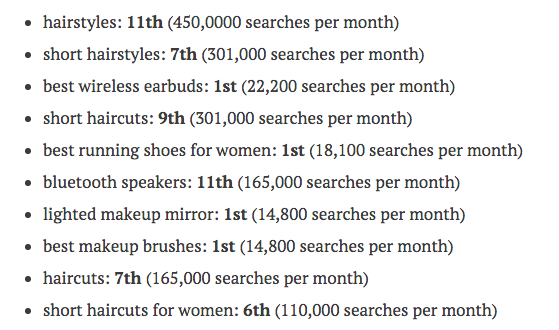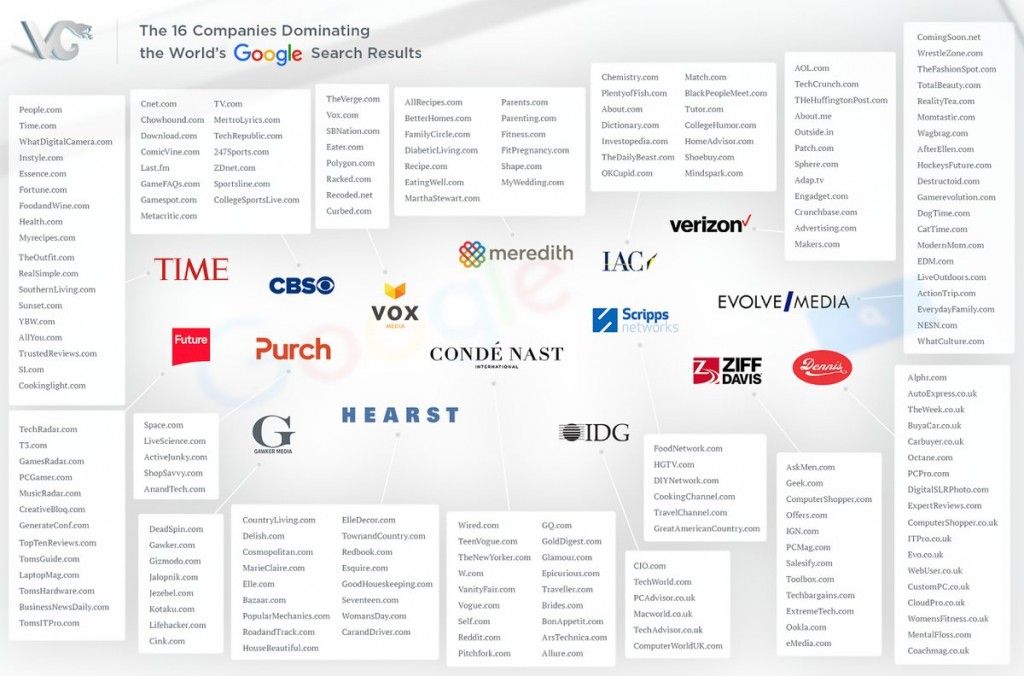A long, long time ago I was talking to Mike Grehan about search engine rankings. He used the term “the rich get richer”, to explain why sites that live at the top of Google are likely to stay there.
One of the reasons is the ease of findability.
A writer who is researching a subject on Google is highly likely to click the top result first. If that web page answers the right questions then it may be enough to earn a citation in an article, and that link will help fortify the search position.
The rich get richer.
I mention this because yesterday I read a brilliant, in-depth post from Glen Allsopp (aka @Viperchill), which illustrates that the rich do indeed get richer, at least in terms of search positions.
In this case, the rich are major publishing groups.
The way they are getting richer is by cross-linking to existing and new websites, from footers and body copy, which are “constantly changing”.
There’s nothing hideously wrong with this approach, but it’s a bit of risk to tweak the links quite so often. Especially when the anchor text is something other than the site’s brand name.
As Glen says:
“As anyone who has been involved in search engine optimisation for a period of time might wonder, surely getting so many sitewide links in a short timeframe should raise a bit of a red flag?”
It’s interesting to see that Google not only tolerates it, but actively rewards this kind of behaviour, at least in the examples highlighted in Glen’s post.
The short story is that Hearst was found to be linking to a newly launched site, BestProducts, from its portfolio of authority websites, which includes the likes of Cosmopolitan, Elle, Marie Claire and Bazaar.
This helped to put the new site on the map in a rather dramatic way.
Party hard in footerland
Here are a couple of screenshots. The first is from March, when the anchor text was ‘Style Reviews’.

The second appeared later, with the link text changing to ‘Beauty Reviews’. Note that the link placement changed too.

I’m going to assume that these links are dofollow, which is a potentially risky tactic, and one that has attracted the dreaded manual penalty for some site owners.
Furthermore, this is clearly something that has been done with intent. Design, not accident.
Glen says:
“It’s now obvious that the people working for Woman’s Day, Marie Claire, Popular Mechanics and Esquire had some conversion that went along the lines of, ‘Don’t forget, today’s the day we have to put those links to Best Products in the footer.’”
But did it work?
The results
Glen estimates that BestProducts attracted at least 600,000 referrals from Google (organic) in April 2016, so yep, it has worked incredibly well.
Here are some of the positions that the site has bagged in little over half a year, from a standing start:

Pretty amazing, right? Some pretty big, broad terms there.
Glen reckons that the following 16 companies – and the brands they own – dominate Google results.

Credit to http://kaiserthesage.com/
I suspect that if you look at other industries, such as car hire, where a few brands own hundreds of sub-brands, that you’ll see similar tactics and results.
We are family?
The standout question for me isn’t whether Hearst and its peers are systematically outsmarting Google with a straightforward sitewide link strategy, nor whether that strategy will hold up. It is more about whether Google truly understands related entities.
Does it know that these sites are linked to one another by having the same parent company? And does that discount the link tactics in play here?
Certainly one of the webspam team would be able to spot that one site was related to another, were it flagged for a manual action. So is Google turning a blind eye?
Here’s what Matt Cutts said about related sites, back in 2014:
“If you have 50 different sites, I wouldn’t link to all 50 sites down in the footer of your website, because that can start to look pretty spammy to users. Instead you might just link to no more than three or four or five down in the footer, that sort of thing, or have a link to a global page, and the global page can talk about all the different versions and country versions of your website.”
“If you’ve got stuff that is all on one area, like .com, and you’ve got 50 or 100 different websites, that is something where I’d be really a lot more careful about linking them together.”
“And that’s the sort of thing where I wouldn’t be surprised if we don’t want to necessarily treat the links between those different websites exactly the same as we would treat them as editorial votes from some other website.”
Note that Matt talks about links to other sites, as opposed to “links with descriptive and ever-changing anchor text”. Somewhat different.
Screw hub pages, launch hub sites
Internal linking works best when there is a clear strategy in place. That normally means figuring out a taxonomy and common vocabulary in advance. It also means understanding the paths you want to create for visitors, to help pull them towards other pages, or in this case, other sites. These should mirror key business goals.
With all that in mind, I think it’s pretty smart, I really do, but let’s see how it plays out. And obviously it takes a rich portfolio of authority websites to play this hand, so yeah… the rich get richer.
Assuming this strategy works out in the long run we can expect to see lots more niche sites being launched by the big publishing groups, underpinned by this kind of cross-site linking.
Ok, so this fluid footer linking approach certainly sails a bit close to the wind and we may not have heard the last of this story, but it once again proves the absolute power of links in putting a site on the map. Take any statements about links not being mattering so much in 2016 with a large bucket of salt.
At any rate, Glen’s post is well worth a read. Do check it out, and share your thoughts below.
The article Are related sitewide footer links the key to dominating Google? was first seen from https://searchenginewatch.com
No comments:
Post a Comment